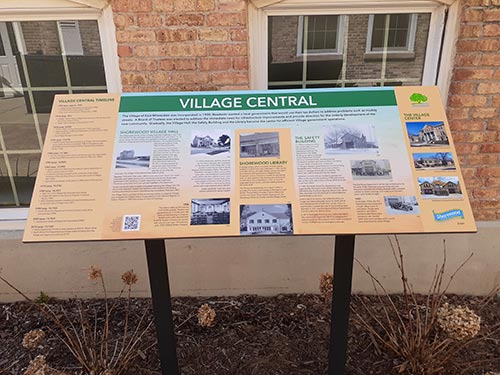Shorewood Interpretive Signs
Village Central
(Murray Ave. between the Village Hall and North Shore Fire Dept.)
The current Village Hall became the center of Village government and services in 1916. The addition of the Safety Building (fire and police, 1928) and library (1962), plus offices for the Health Dept., Senior Resource Center and the Historical Society now make up Village Central.
The Village Hall and North Shore Fire Department are historically significant buildings.
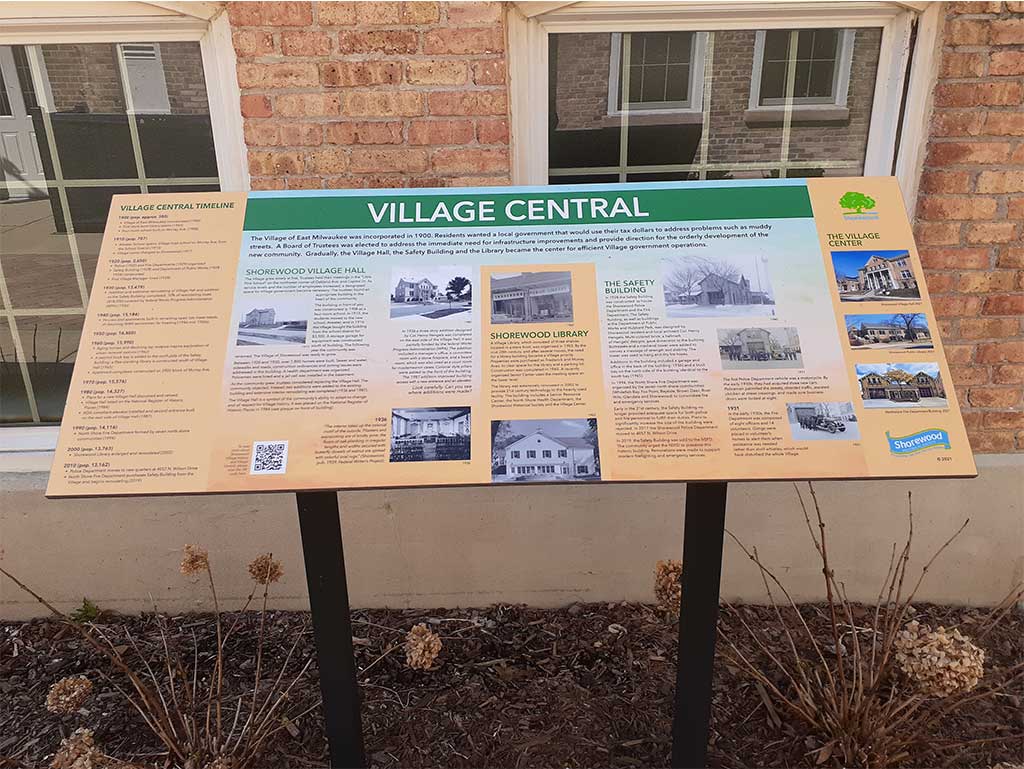
Welcome to Hubbard Park
(West side of tunnel entrance to park)
Situated on the Milwaukee River, Hubbard Park has been a welcome green oasis for Village residents since the 1920s. Construction of the park buildings was a WPA project in the 1930s. The park is named after William Hubbard, an early Village President.
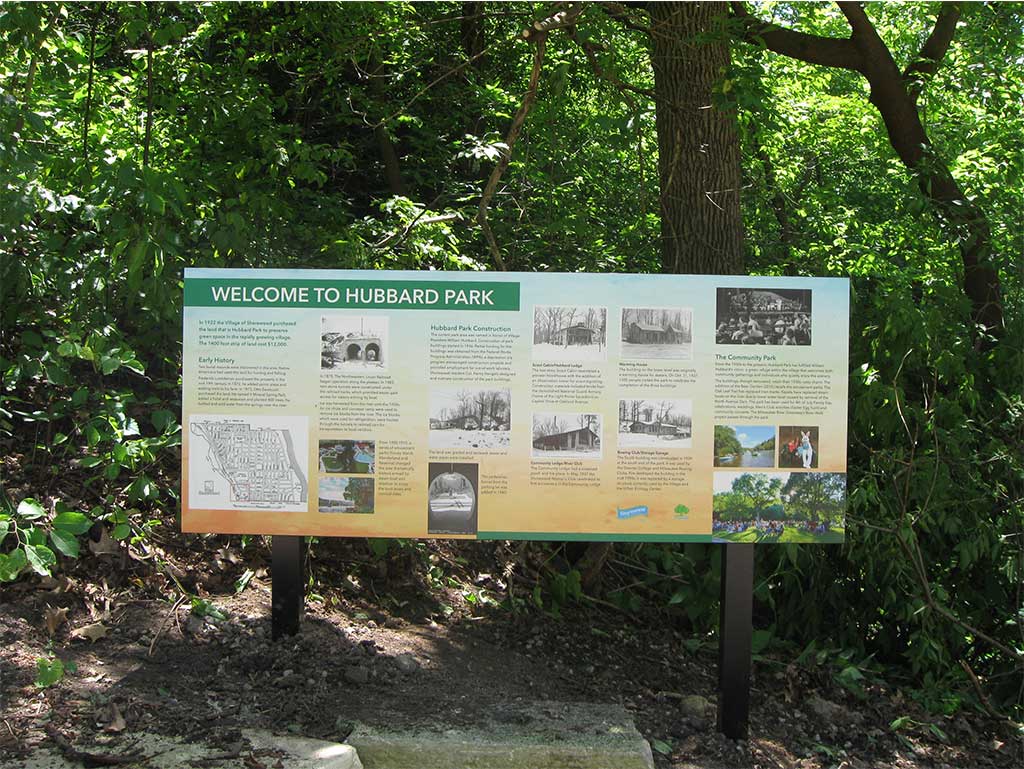
A Colorful Controversial Corner
(River Park, near ball fields)
From 1900 – 1916, an amusement park (successively named Cooney Island, Wonderland, and Ravenna) occupied the southwest corner of the Village. Visitors arrived from Milwaukee to ride the Ferris wheel and the roller coaster and visit the music hall and fun house.
From 1916 to 1968, the area was a street car hub and bus station for The Milwaukee Electric Railway & Light Company
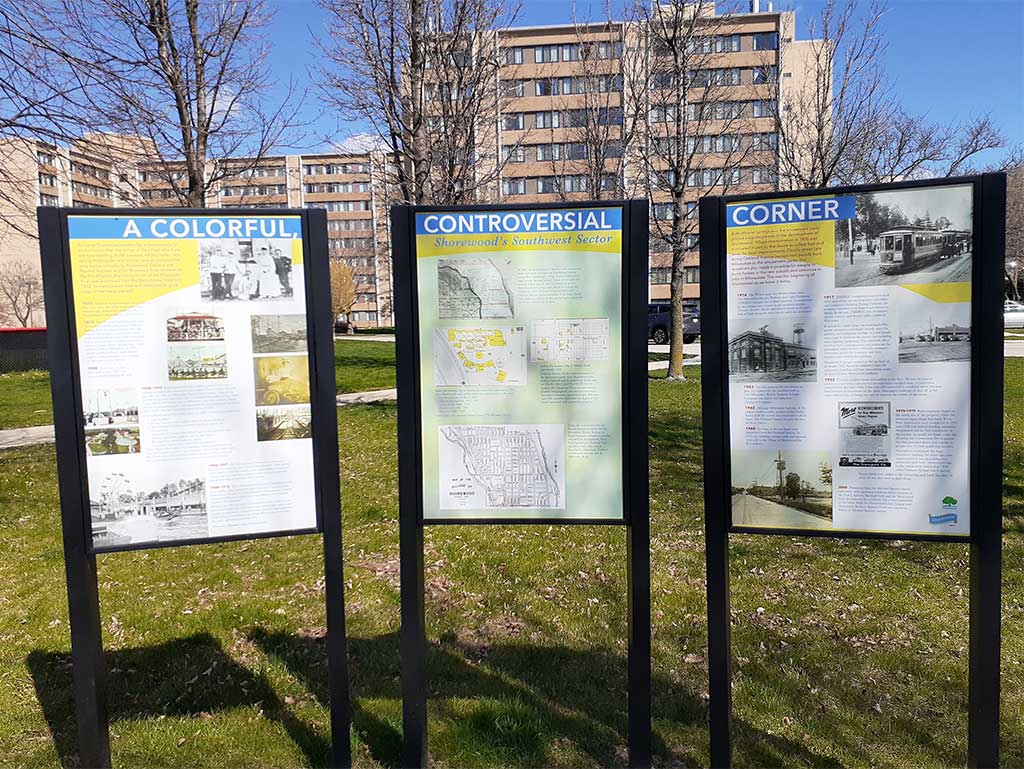
Here Comes the Train!
(Capitol Dr. near the overpass at street level and next to the Oak Leaf Trail)
Railway tracks were laid along the plateau above the Milwaukee River in 1883. By the 1920s over 40 freight and passenger trains passed through Shorewood daily. Mid-century, crowds would gather to watch the bright yellow Chicago and Northwestern “400” train pass through. The “Ghost Train,” an interactive art installation, uses lighting and sound to create the allusion that the “400” is still crossing the bridge every evening.
The last freight train passed through the Village in 1989, and the tracks were replaced by the Oak Leaf Trail.
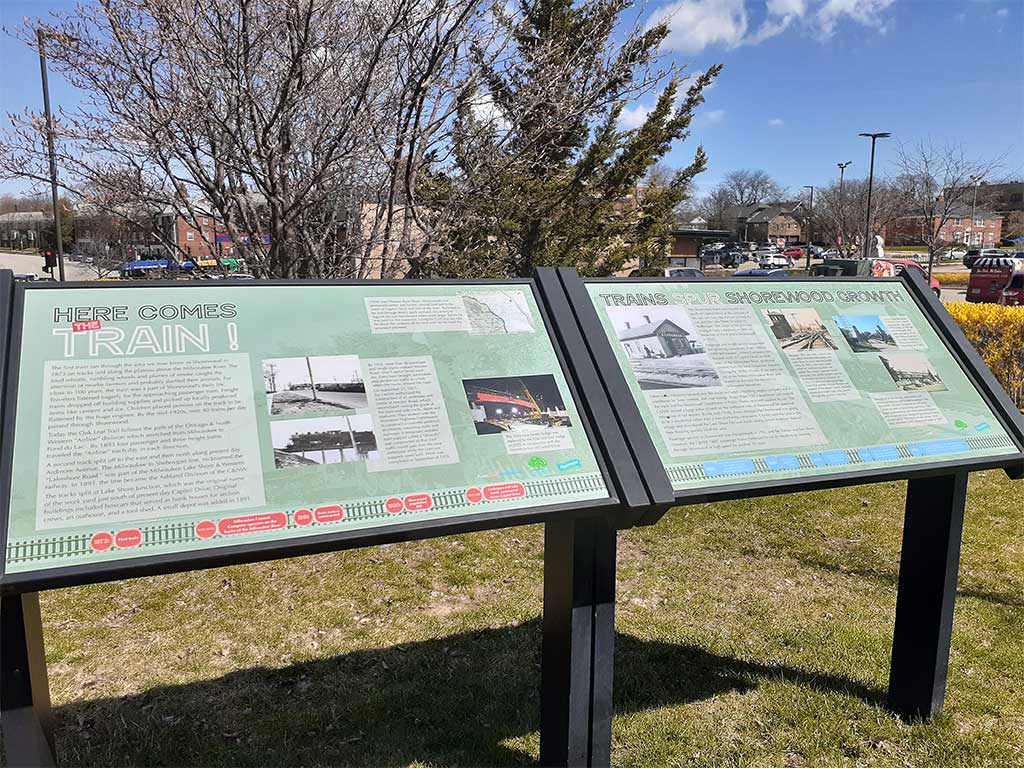
Industry to Parkland: The Milwaukee Cement Company
(Intersection of Wilson Dr. and Kensington Blvd.)
From 1876 – 1909, The Milwaukee Cement Company produced a huge quantity of natural cement along the banks of the Milwaukee River, north of Capitol Dr. By 1891 it produced as much as 475,000 barrels annually (about 125 million lbs.), which made the company the largest producer of natural cement in the United States.
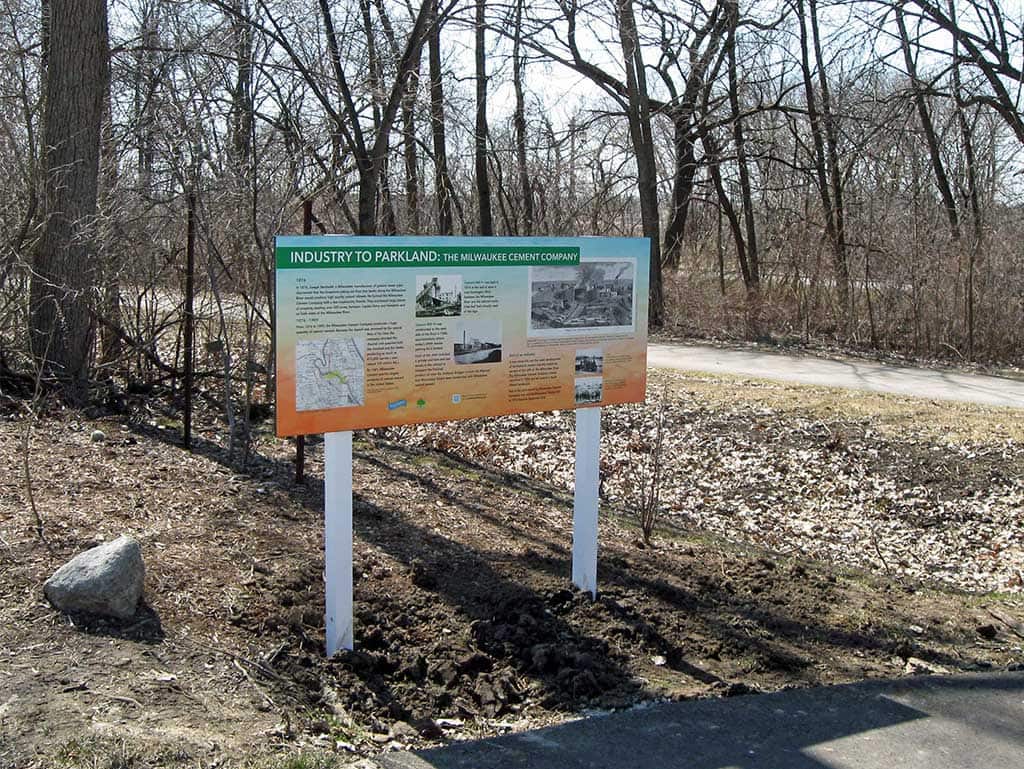
National, State and County Historical Markers
Buildings, trails and even ship wrecks have been recognized as Shorewood landmarks by the National Registry of Historic Buildings, the State of Wisconsin and Milwaukee County. Most locations are marked with a sign or plaque.
